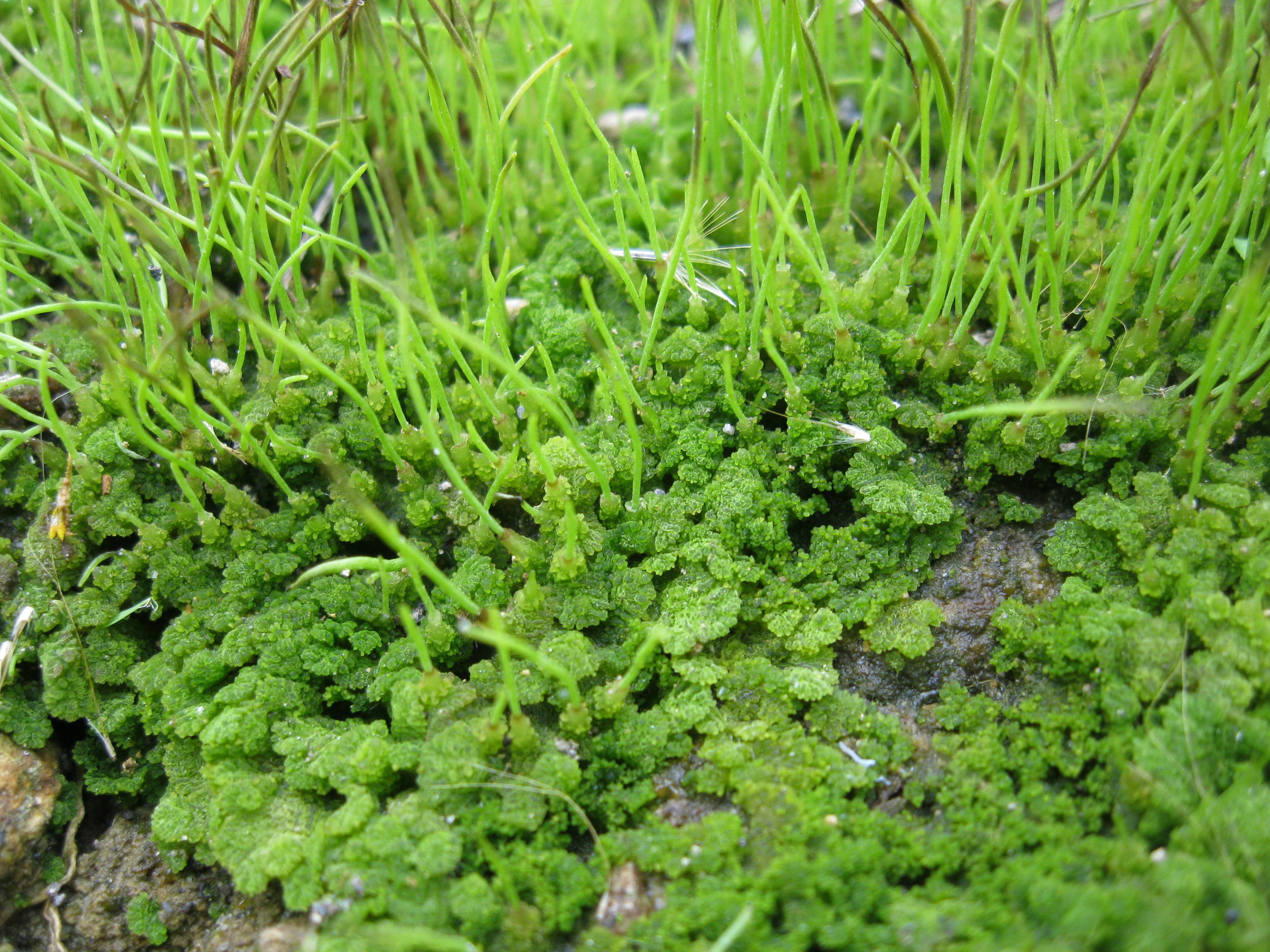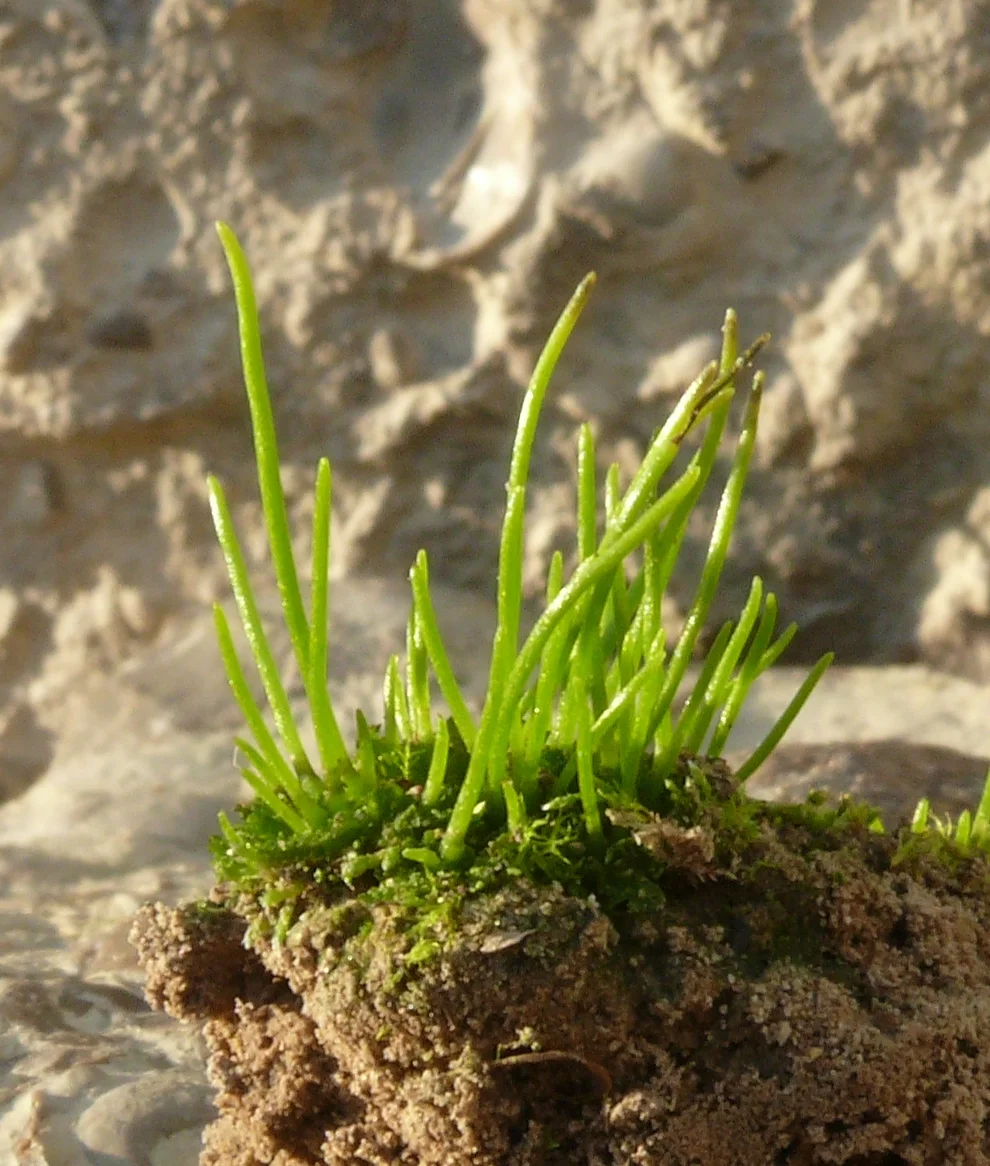Anthoceros sp. Photo by Bramadi Arya licensed under CC BY-SA 4.0
When was the last time you thought about hornworts? Have you ever thought about hornworts? If you answered no, you aren’t alone. Despite their global distribution, these tiny plants receive hardly any attention and that is a shame. Hornworts (Anthocerotophyta) have been around for a very long time. In fact, it is likely that they were some of the first plants to colonize the land roughly 300 - 400 million years ago.
To be fair, hornworts aren’t known for their size. They are generally small plants, though their colonies can form impressive mats. To find them, one must try looking in and among rocks, bare patches of soil, or pretty much anywhere enough moisture builds up to supply their needs. They tend to enjoy nutrient-poor substrates but I would hesitate to say that with any certainty. No matter where you live, from the tundra to the tropics, there is probably a hornwort native to your neck of the woods.
Dendroceros sp. Photo by J.Ziffer licensed under public domain
How many different species of hornwort there are is apparently the subject of some debate. Some authors recognize upwards of 300 species whereas others suggest the real number hangs somewhere around 150. Regardless of the exact numbers, hornworts belong to one of six genera: Anthoceros, Dendroceros, Folioceros, Megaceros, Notothylas and Phaeoceros. Fun fact, the suffix ‘ceros’ at the end of each genus is derived from the Latin word for ‘horn.’
The reason they are called hornworts is because of their reproductive structures or “sporophytes.” Similar to their moss and liverwort cousins, hornworts undergo an alternation of generations in order to reproduce sexually. The green gametophytes house the sexual organs - antheridia if they are male and archegonia if they are female. After fertilization, a sporophyte begins to grow, which will go on to produce and disseminate spores. However, the way in which the hornwort sporophyte forms is a bit different from what we see in mosses and liverworts.
Alternation of generations in hornworts. Photo by Mariana Ruiz (LadyofHats) licensed under public domain
Upon fertilization, the zygote begins to divide into a bulbous mass of cells affectionately referred to as "the foot.” This foot remains within the gametophyte throughout the lifetime of the hornwort, depending on the gametophyte for water and nutrients. Even more peculiar is the the fact that the growing point of the sporophyte is at the base rather than the tip. As such, the horn of each hornwort could continue to grow upwards until it is damaged in some way.
The horn itself is an amazing structure. Whereas the outside layers of tissue are merely structural, the internal tissues differentiate into two different types - spores and pseudo-elaters. Pseudo-elaters expand and contract as humidity fluctuates so as the sporophyte splits to release the spores, the pseudo-elaters dehydrate and snap like tiny spore catapults, thus aiding in their dispersal.
Megaceros flagellaris. Photo by Dr. Scott Zona licensed under CC BY-NC 2.0
Of course, reproduction is the main goal but to get to that point, hornworts must grow and mature. How they manage to survive is incredible because it is a reminder that what are often thought of as “primitive” plants are actually far more advanced than we give them credit for. The main body of the hornwort gametophyte is a thin layer of cells that spread out to form a tiny, green mat. This is the structure you are most likely to encounter.
Inside each cell is a single chloroplast. In most hornworts, the chloroplast does not exist in isolation. Instead, it is fused with other organelles into a structure called a “pyrenoid.” The pyrenoid functions as both a center for photosynthesis and a food storage organ. This is unique as it relates to terrestrial plants but quite common in algae. Another odd fact about hornwort anatomy are the presence of tiny cavities scattered throughout their tissues. These cavities form as clusters of hornwort cells die. They then fill with a special mucilage that appears to invite colonization by nitrogen-fixing cyanobacteria. The cyanobacteria set up shop within the cavities and provides the hornwort with supplemental nitrogen in return for a place to live.
Anthoceros agrestis photo by BerndH licensed under CC BY-SA 3.0
Cyanobacteria aren’t the only organisms to have partnered with hornworts either. Mycorrhizal fungi also enter into the picture. A study done back in 2013 actually found that a wide variety of fungi will partner with hornworts which suggests that this symbiotic relationship is much more ancient and versatile than we once thought. Fungi cluster around parts of the gametophyte that produce root-like structures called “rhizoids,” offering nutrients in return for carbohydrates.
All in all, I think it is safe to say that hornworts are remarkable little plants. Though they can sometimes be difficult to find and properly identify, they nonetheless offer plenty of inspiration for the botanically inclined mind. We can all do better by tiny plants like the hornworts. They have been on land for an incredible amount of time and they definitely deserve our respect and admiration.




